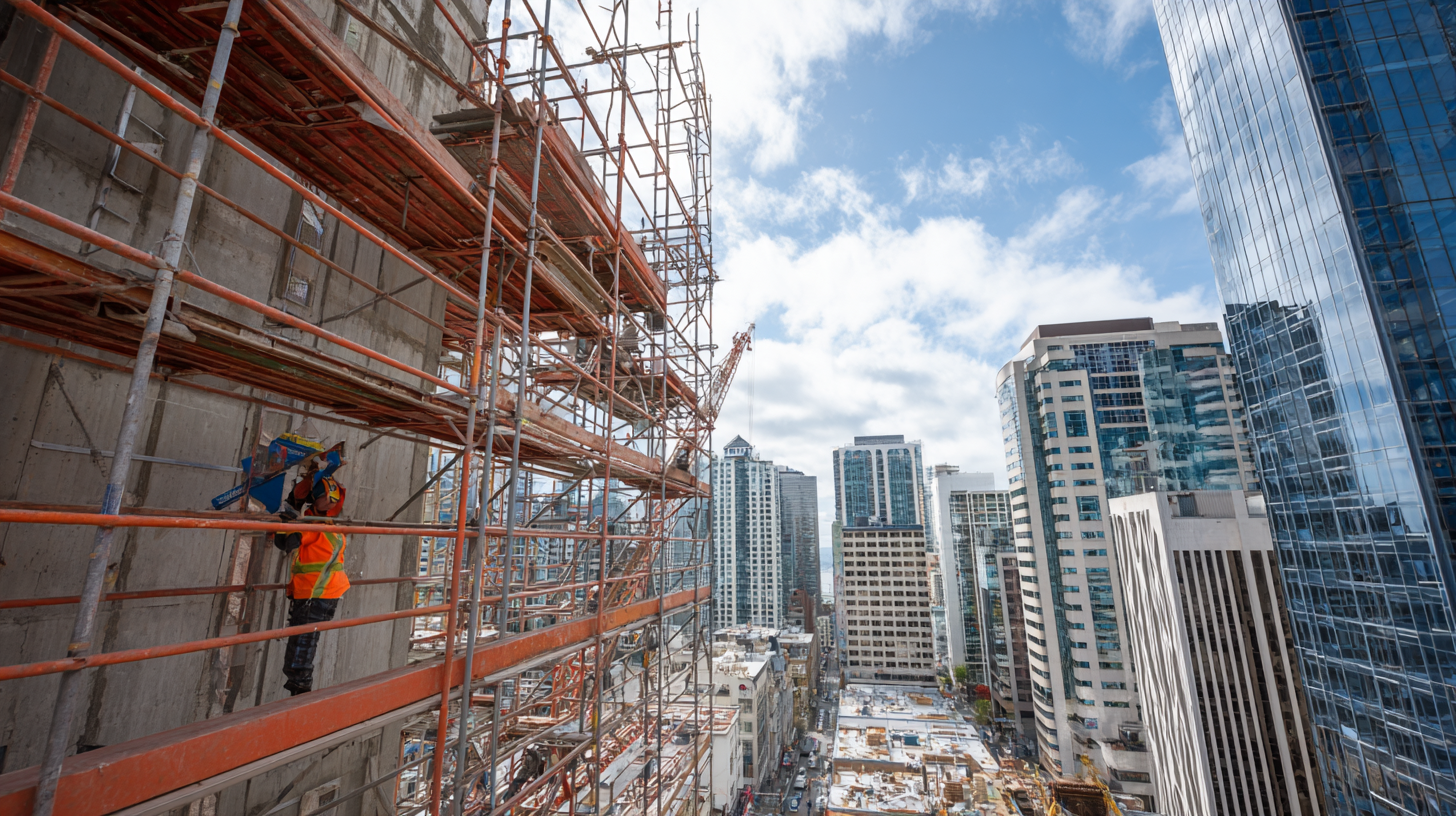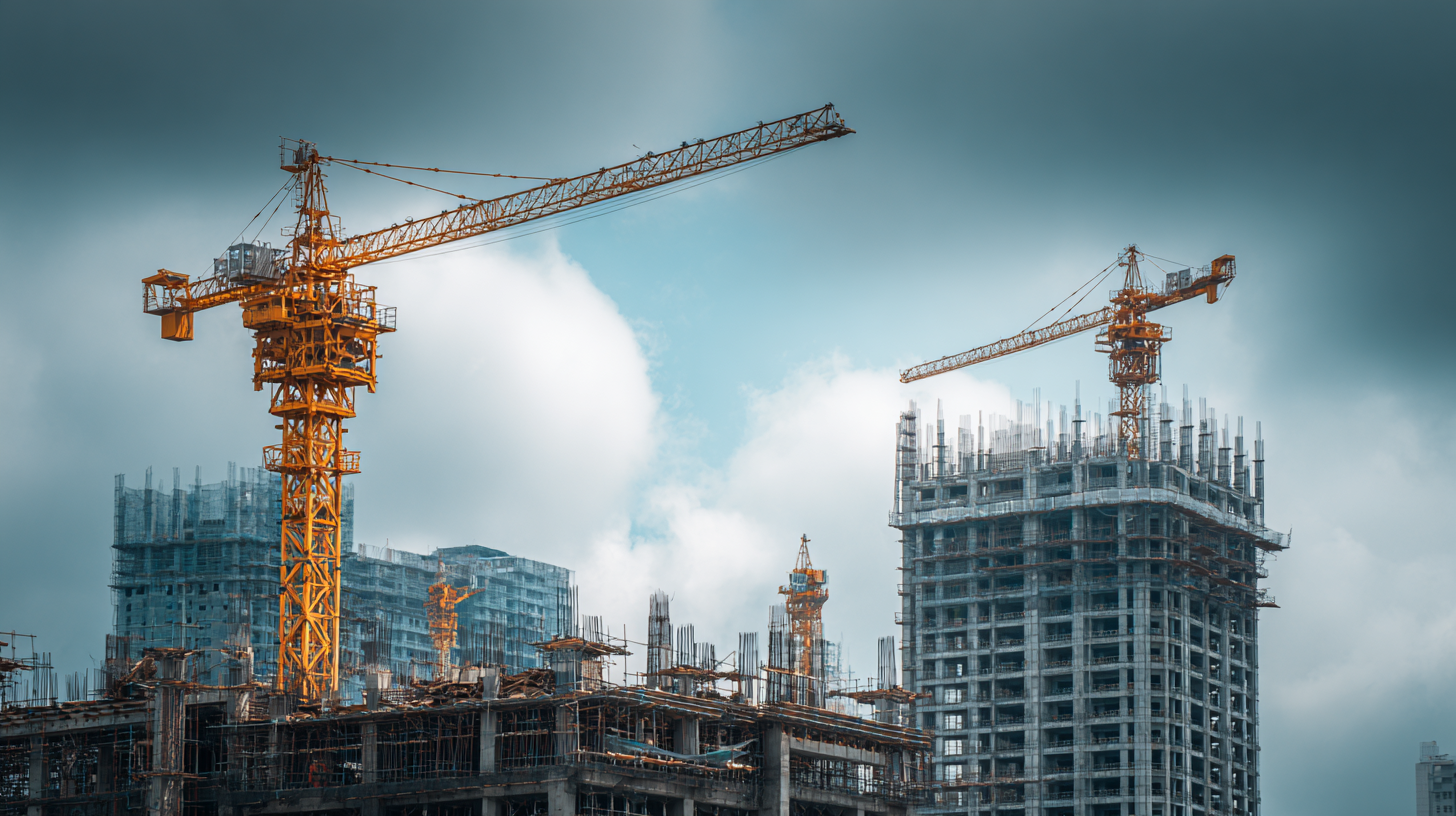 +86 18531741341
+86 18531741341
Leave Your Message
In the dynamic world of construction, safety and efficiency are paramount, and one of the essential systems that uphold these standards is construction scaffolding. This comprehensive analysis delves into the various types of construction scaffolding and their distinct performance metrics, offering insights into their benefits.
 From traditional wooden scaffolds to modern modular systems, each type comes with its own set of advantages that influence project timelines, worker safety, and overall structural integrity. By understanding the unique characteristics and performance of these scaffolding types, construction professionals can make informed decisions that enhance productivity while ensuring a secure working environment.
Join us as we explore the multifaceted benefits of construction scaffolding and its critical role in the success of construction projects.
From traditional wooden scaffolds to modern modular systems, each type comes with its own set of advantages that influence project timelines, worker safety, and overall structural integrity. By understanding the unique characteristics and performance of these scaffolding types, construction professionals can make informed decisions that enhance productivity while ensuring a secure working environment.
Join us as we explore the multifaceted benefits of construction scaffolding and its critical role in the success of construction projects.
 Construction scaffolding is an essential component in the realm of building and renovation. It refers to a temporary structure that provides a platform for workers and materials, enabling them to access different heights safely. At its core, scaffolding supports the construction process by enhancing safety and efficiency. There are various types of scaffolding, such as supported scaffolding, suspended scaffolding, and aerial lifts, each designed for specific tasks and building configurations.
Construction scaffolding is an essential component in the realm of building and renovation. It refers to a temporary structure that provides a platform for workers and materials, enabling them to access different heights safely. At its core, scaffolding supports the construction process by enhancing safety and efficiency. There are various types of scaffolding, such as supported scaffolding, suspended scaffolding, and aerial lifts, each designed for specific tasks and building configurations.
The primary function of scaffolding is to give workers a stable and secure environment to perform their tasks, whether it’s painting, bricklaying, or repairing structures. Safety is paramount in construction, and effective scaffolding ensures that workers can reach their objectives without compromising their health or well-being. Understanding the basics of scaffolding allows project managers and construction teams to select the right type for their needs, contributing to overall project success while minimizing hazards associated with height work.
When it comes to construction scaffolding, understanding the different types available is crucial for selecting the right one for a project. The key varieties include frame scaffolding, system scaffolding, and suspended scaffolding, each with its unique advantages and applications. Frame scaffolding, often seen in various construction sites, consists of metal frames that are easy to assemble and disassemble, making them ideal for quick setups and straightforward tasks.
On the other hand, system scaffolding is engineered for efficiency, allowing workers to adapt the structure according to the project’s specific needs. It features modular components that can be configured in diverse ways, which enhances flexibility and stability during construction. Suspended scaffolding is another essential type, especially for high-rise buildings. It involves platforms suspended from a roof or an upper structure, providing access to vertical surfaces like façades without the need for ground-based support. Each type of scaffolding plays a pivotal role in optimizing safety, efficiency, and access in construction projects, tailored to fit various operational demands.
When evaluating scaffolding effectiveness, performance metrics play a crucial role in ensuring safety, efficiency, and overall project success. Key indicators often include load capacity, stability, ease of assembly and disassembly, and adaptability to various construction environments. Load capacity refers to the maximum weight a scaffolding system can support without jeopardizing structural integrity, making it essential for preventing accidents on site. Stability, measured through wind resistance and structural rigidity, is vital for maintaining safety during adverse weather conditions.

Another important metric is the time taken for erection and dismantling. A scaffolding system that can be set up and taken down quickly not only reduces labor costs but also minimizes project delays. Additionally, adaptability refers to how well a scaffolding system can be modified to accommodate different structures and heights. Effective scaffolding must be versatile enough to meet the specific demands of varied construction projects while ensuring compliance with safety regulations.
By carefully analyzing these performance metrics, construction managers can select the most appropriate scaffolding systems that align with project requirements, ultimately leading to improved safety and efficiency on site.
In the construction industry, safety is paramount, especially when it comes to scaffolding. A report by the Occupational Safety and Health Administration (OSHA) reveals that falls account for approximately 33% of construction-related fatalities. Therefore, selecting the right type of scaffolding is crucial not just for structural integrity, but for worker protection as well. Different scaffolding types, including system scaffolds, tube and clamp scaffolds, and cantilever scaffolds, offer varying levels of safety features. For instance, system scaffolds often come pre-engineered with guardrails and toeboards, significantly enhancing worker protection across various job sites.
Moreover, research conducted by the National Institute for Occupational Safety and Health (NIOSH) indicates that proper training and usage of scaffolding can decrease accident rates by up to 50%. This highlights the importance of ensuring that workers are not only equipped with safe scaffolding but also educated about its proper use. Compliance with safety standards, maintenance checks, and regular inspections of scaffolding are critical components to safeguarding workers. By prioritizing these safety considerations, the construction industry can enhance its performance metrics while simultaneously protecting the most valuable asset—its workforce.
| Scaffolding Type | Material | Load Capacity (kg) | Height (m) | Safety Rating | Common Use Cases |
|---|---|---|---|---|---|
| Frame Scaffolding | Steel | 450 | 10 | A | Commercial construction |
| System Scaffolding | Aluminum | 350 | 8 | A+ | Industrial projects |
| Mobile Scaffolding | Steel & Plastic | 250 | 6 | B | Residential and minor repairs |
| Cantilever Scaffolding | Wood & Steel | 300 | 5 | A | Overhangs and support beams |
| Suspended Scaffolding | Aluminum | 200 | 3 | A | High-rise building maintenance |
When selecting scaffolding for construction projects, several critical factors must be taken into account to ensure optimal performance. First and foremost, the type of scaffolding material—steel, aluminum, or wood—plays a pivotal role in determining durability and load capacity. According to a report by the Occupational Safety and Health Administration (OSHA), steel scaffolding can support significantly heavier loads compared to its aluminum counterparts, making it a preferred choice for heavy construction tasks where stability and strength are paramount.
Additionally, the scaffolding design can have a major impact on safety and efficiency. For instance, modular scaffolding systems allow for quick assembly and disassembly, reducing downtime on the job site. A 2021 study by the Scaffolding Association indicated that projects using modular scaffolding saw a 20% decrease in labor costs due to the efficiency of installation and transport. Furthermore, considering factors such as the height of the structure, environmental conditions, and specific job requirements will help in choosing scaffolding that aligns with safety regulations and performance expectations, ultimately leading to successful outcomes in construction projects.
